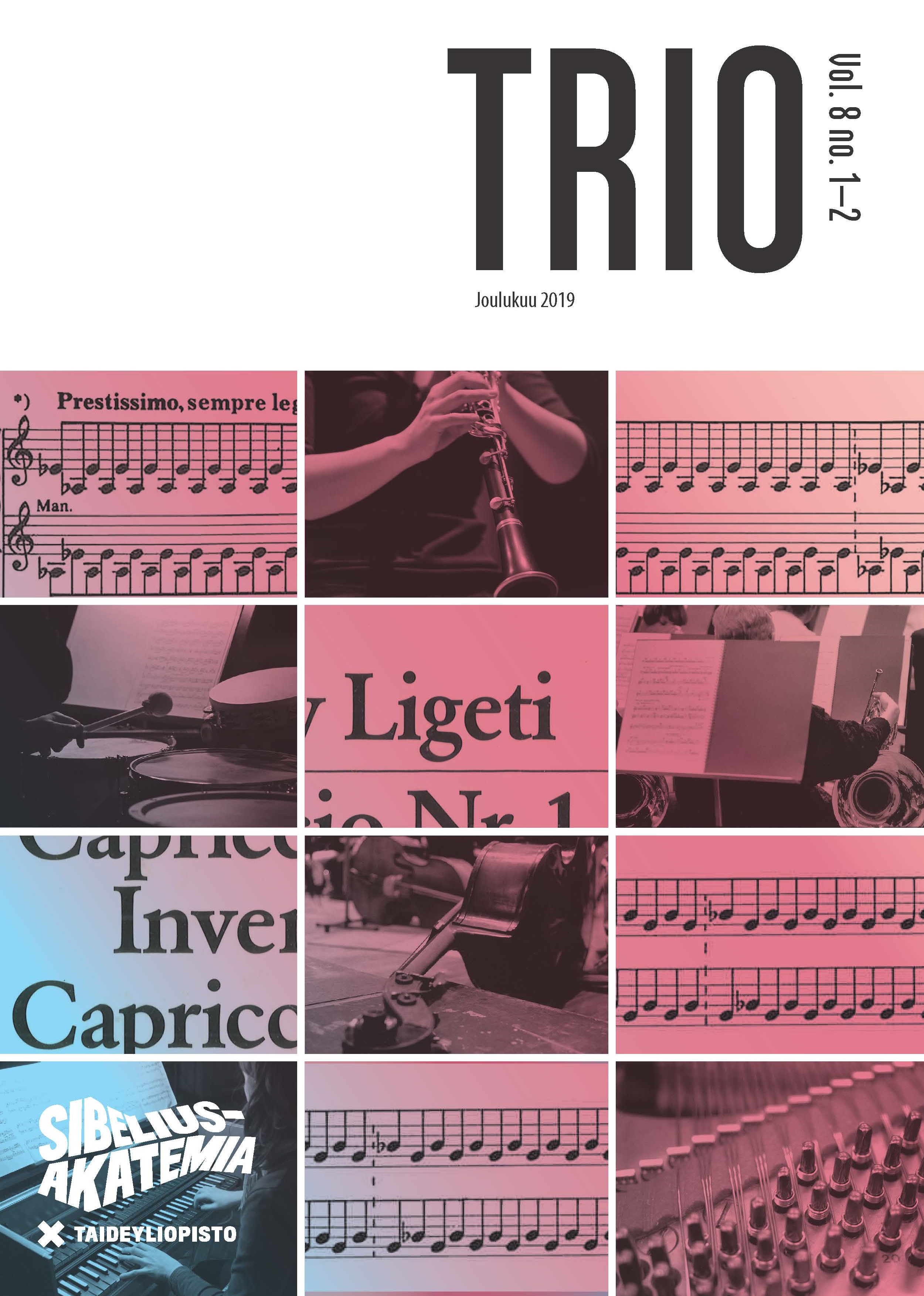György Ligeti and organ music – traditional reformer or revolutionary discoverer? Ligeti’s organ music and its influence to the playing technique of organ
Abstrakti
The article draws a picture of György Ligeti as an organ composer and it shows the means, which he came up with to produce a new kind of sound on an old, traditional instrument. The aim here is to talk about the relationship between tradition and reformation in terms of playing techniques in Ligeti’s organ music. Because Ligeti didn’t have much experience with traditional organ playing techniques, as far as articulation in all its dimensions goes, with different approaches through historical performance practice, he could begin his work from a clean table. However, he did use all manner of touch, developed new playing skills and invented new ways of registration, which gave his music new wonderful colours and timbres. Ligeti composed three different pieces for organ: an early Ricercare, the massive Volumina and two spectacular études. The article will focus here merely on the last two: the Volumina and the Zwei Etüden. They are both revolutionary in a way because they don’t respect tradition. They are also exceptional compositions, because they are both analogous with either orchestra or instrumental pieces, which Ligeti was writing at the same time. Furthermore, they both need professional organ registrants. The registrant actually has a more important role in the performance than the organist him or herself. If we don’t count his early piece, Ricercare, he was quite revolutionary. In Volumina there is not even a single note, which should be played in a normal way, but Ligeti’s organ playing in it is for instance the use of palms of the hands in gliding across keys and the manuals. By using graphic notation he could best achieve freedom for the player, and the result of the integration of a new playing technique with a new kind of notation made the organ like a timbre-machine. The practice of registration also found a new level in the inventions of Ligeti. György Ligeti’s heritage in organ composition is enormous. After the massive revolution of Volumina and Zwei Etüden organ playing as a whole and especially the way of composing for organ took a new direction. One could not imagine many contemporary pieces without Ligeti’s example.Tiedostolataukset
Julkaistu
2019-12-20
Numero
Osasto
Vertaisarvioidut artikkelit





